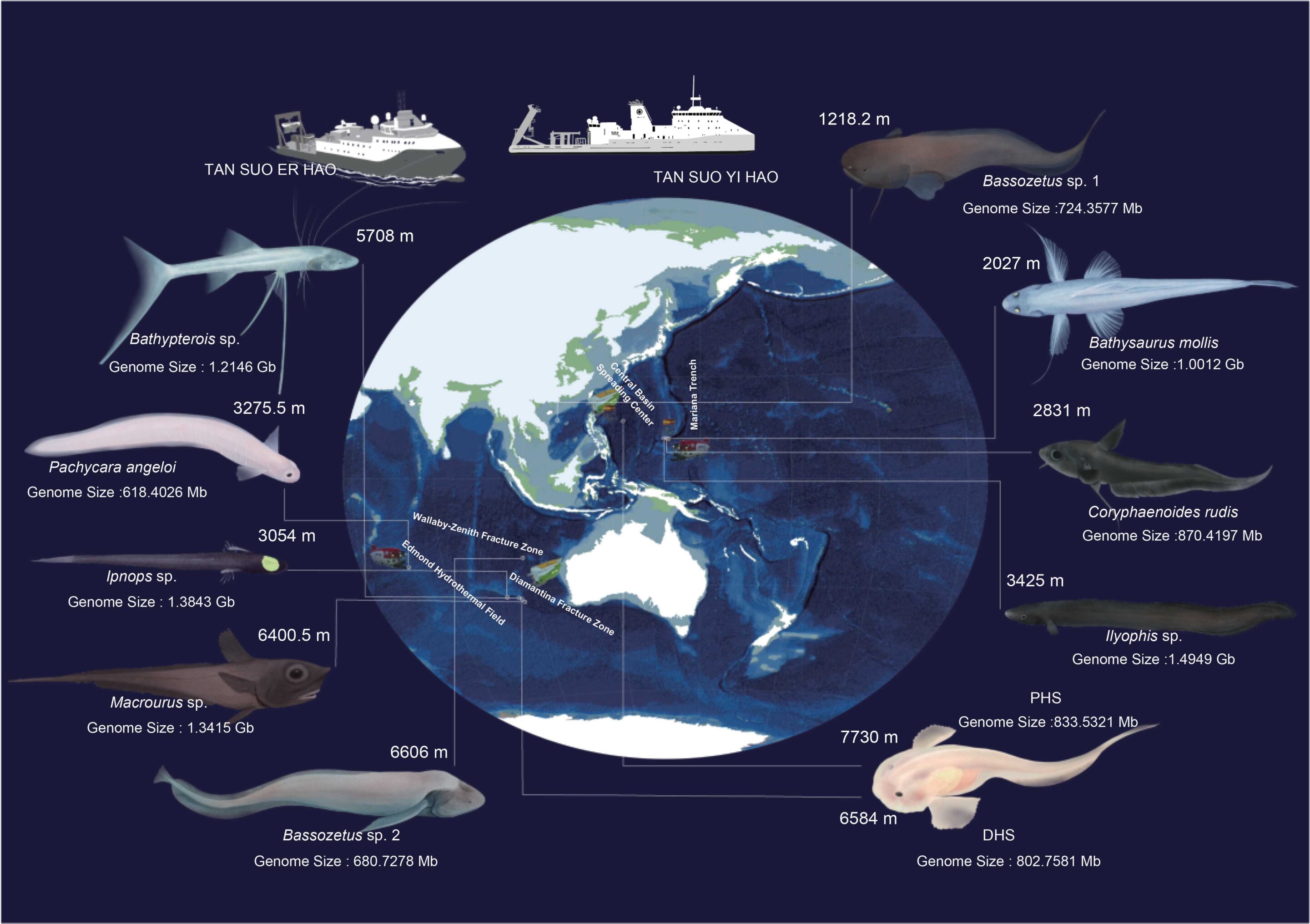It’s no wonder deep-sea creatures are so strange. They survive against the odds in one of the most extreme environments on the planet, featuring near-zero temperatures, desperately low oxygen levels, constant darkness, and unbelievably high pressure. How on Earth do they do it?
In a new study, scientists have taken a look at the genetics of 11 species of deep-sea fish and uncovered how they managed to adapt to these intense conditions. This gang of abyss dwellers included characters like Philippine hadal snailfish and a species of lizardfish called Bombay duck (we have no idea why).
All of these vertebrate animals lurk in water depths of 1,218 to 7,730 meters (3,996 to 25,361 feet). This includes the hadal zone – the deepest part of the sea – found within oceanic trenches at depths greater than 6,000 meters (about 19,700 feet). Here, levels of hydrostatic pressure are unbelievable, exceeding 1 ton per square centimeter. Imagine how heavy a bucket of water is. Now imagine what it would be like with thousands of meters pressing down on you from above.
Genomic analysis showed that deep-sea fish have lower mutation rates but stronger signals of natural selection, especially in genes related to DNA repair and membrane integrity. Adaptations to darkness varied between the species: some species lost vision-related genes, while others expanded genes for dim-light vision.
Most fascinating of all was a mutation in a gene called rtf1 that was seen in nearly all the fish that lived below 3,000 meters (nearly 10,000 feet). According to the study, this is a clear example of rapid convergent evolution: wildly different species, separated by millions of years, all arriving at the same genetic solution to survive a world of crushing pressure.

A summary of the deep-sea freaks featured in this study.
The mutation to rft1 boosts the transcriptional efficiency of genetic material. The researchers believe this ability is likely to be advantageous in the deep-sea environment, specifically in regard to coping with extreme pressure.
Through this genetic analysis, the researchers confirmed a century-old theory: deep-sea fish didn’t follow just one path into the abyss, but two. Some are “ancient survivors,” pioneers that braved the depths before the dinosaurs vanished. Others are “new immigrants,” latecomers that emerged after the mass extinction 60 million years ago. Together, they tell a story of survival and adaptation written in two evolutionary pathways.
If you thought fish in the deepest parts of the ocean were safe from human activity, think again. The livers of hadal snailfish from the Mariana Trench and the Philippine Trench were found to be loaded with alarmingly high concentrations of polychlorinated biphenyls (PCBs) – toxic synthetic chemicals banned decades ago but still haunting the planet. Their presence in the hadal zone is a chilling reminder that no corner of the ocean is untouched, and even the most alien creatures on Earth are now bearing the fingerprints of human pollution.
The study is published in the journal Cell.
Source Link: Deep-Sea Fish Have Independently Evolved The Same Gene Mutation To Deal With Crushing Pressure